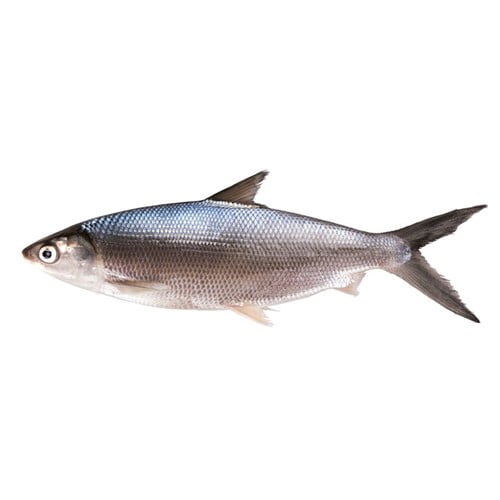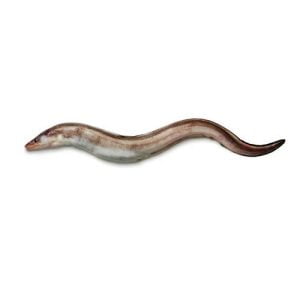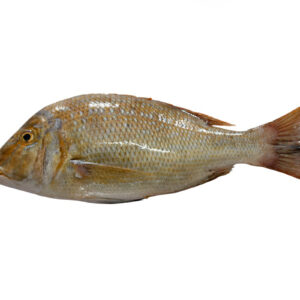Milk Fish (Sulemani) — Mild, Nutritious & Perfect for Curry, Frying, Grilling & Traditional Recipes
Milk Fish — locally known as Sulemani — is a beloved seafood choice across coastal regions for its soft flakes, mild flavor, and rich nutritional value. It’s ideal for anyone who wants a fish that’s clean-tasting, versatile, and perfect for everyday family meals.
Sulemani has a tender, slightly buttery texture that works beautifully in masala gravy, golden fry, charcoal grill, or coconut-based curries. It absorbs spices exceptionally well, holds its shape during cooking, and offers a pleasant, gentle aroma — making it a great option even for those who prefer lighter seafood flavors.
Freshly sourced from the Arabian Sea and delivered chilled, our Milk Fish is expertly cleaned, handled with care, and packed for maximum freshness.
Similar Fish to Try
If you enjoy the mild, soft taste of Milk Fish, you may also like: Tilapia (Daiyya), Seabream (Safaid Dandia), Goldline Bream (Kapartan), or Bhetki (Daangri) for similar tender, white-meat seafood options.
Flavor Profile
This is a weirdly built fish, but more edible than you might expect for something that flat and bony.
Nomenclature
- English Name: Milk Fish
- Local Name: Sulemani & Murri
- Scientific Name: Chanos Chanos
Habitat
Sulemani Fish is a sea fish that lives in coastal pelagic, entering estuaries, and brackish waters.
Catching Method
Milkfish (Sulemani Fish) is caught using Gillnets.
Physical Attributes
Lower jaw with a small tubercle at the tip, dorsal fin with 2 spines and 13–17 rays, anal fin with 2 spines and 8–10 rays, scales small, lateral line present.
Color
Milkfish (Sulemani Fish) has an olive-green back when alive with silvery flanks. The dorsal and caudal fins are with dark margins.
Size
On average, the milkfish (Sulemani Fish) size range is 200 to 1000 grams per fish. However, other sizes are also occasionally available.
Cutting Preferences
MilkFish (Sulemani Fish) is preferred for all whole, headless, and slices.
Approx. Cutting Yields
- Whole: 100%
- Gutted: 80%
- Headless and Gutted: 65%
- Slices: 60%
- Boneless: 38%
Why Choose Milk Fish (Sulemani) from Anbar Fish?
Mild, Clean Flavor – Perfect for the whole family
Soft, Tender Texture – Delicious in fry & curry
High Meat Content – Great value with excellent yield
Versatile Cooking – Ideal for desi & coastal-style dishes
Fresh & Hygienic Delivery – Cleaned, washed & chilled
Health Benefits of Milk Fish
Rich in Omega-3 – Supports heart, skin, and brain health
High in Protein – Great for daily energy and muscle strength
Low in Fat – Ideal for healthy and balanced diets
Packed with B-Vitamins – Helps metabolism and nerve function
Essential Minerals – Selenium, potassium, calcium & phosphorus
Cooking Inspiration
Sulemani Fish Fry – A classic with crispy edges and soft flakes
Milk Fish Masala Curry – Perfect for rice, chapati, or naan
Grilled Sulemani Steaks – Smoky, tender, and aromatic
Pan-Seared Fillets – Simple, light, and flavorful
Coastal-Style Coconut Curry – Creamy and delicious
Pro Tip: Marinate Sulemani in lemon, salt, and garlic for 15–20 minutes before frying or grilling to enhance its natural flavor.
Milk Fish (Sulemani) — FAQ
| Question | Answer |
|---|---|
| Does Milk Fish have a strong smell? | No — it has a clean, mild aroma that families prefer. |
| Is Sulemani good for curry? | Excellent — it absorbs spices beautifully. |
| Does it fry well? | Yes — soft meat with a crisp outer layer. |
| Is Milk Fish healthy? | Very — omega-3 rich, high protein, low fat. |
| Is it delivered fresh or frozen? | Delivered fresh and chilled; frozen available upon request. |
| Do you clean the fish? | Yes — gutted, washed, and sliced as needed. |
| Do you deliver across Karachi? | Yes — fast, chilled, same-day delivery. |
| Is Milk Fish good for children? | Yes — soft, mild, and easy to eat. |







There are no reviews yet.